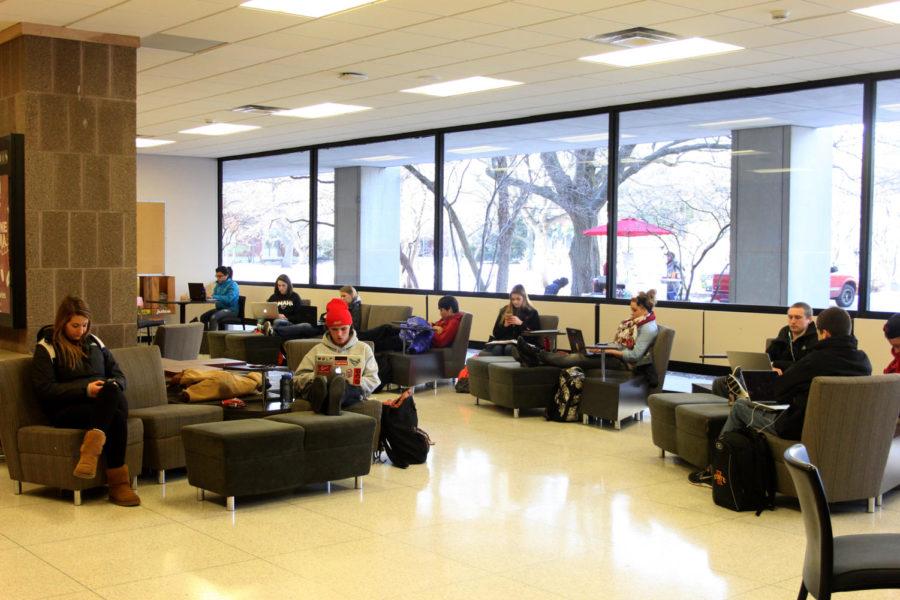Social media impacts today’s students
Korrie Bysted/Iowa State Daily
Students using various forms of technology while waiting for their next class in the Carver lounge on Dec. 2nd.
December 3, 2014
Past tweets, statuses and photos can either help or hinder students when it comes to looking for a job.
As of January 2014, 74 percent of adults online use social networking sites, according to the Pew Research Internet Project.
Of the 74 percent of adults using social networking sites, 89 percent of them were between the ages of 18 and 29.
“I would say that social media has benefited my student employees,” said Brittney Rutherford, program coordinator for the Department of Residence and ISU Dining.
The DOR hires hundreds of students across campus.
“I don’t see a positive or a negative impact of social media,” Rutherford said.
Rutherford said she understands today’s students have grown up with social media. It’s simply what a lot of students are used to as means of communication, she said.
According to the project, as of January 2014, 19 percent of online adults use Twitter, as well.
“They [the student employees] are the ones who keep me informed on what social media platforms their peers are using and the types of things they prefer to do on each platform,” Rutherford said.
Rutherford said when they receive feedback from customers on their Department of Residence or ISU Dining platforms they are able to have a conversation with the customer through social media.
“Many times, this helps improve our service,” Rutherford said.
As of September 2013, 71 percent of online adults use Facebook.
“Social media has made the average college student’s attention span a lot shorter,” said Alexia Angton, graduate student in sociology.
Angton said social media was created to get information out in a short time and in spatial increments.
According to the Pew Research Internet project, between February 2005 and August 2006, usage of social networking sites among adults between the ages of 18 and 29 jumped from 9 percent to 49 percent.
“It has made it harder for students to pay attention for longer amounts of time, such as in a class lecture,” Angton said.
Angton said although she believes social media could be positive when used correctly, she believes it has negatively impacted students overall.
About 500 million tweets are sent per day, according to Twitter.
“It distracts students from their education by causing them to want to check their Facebook, Twitter, Instagram, Snapchat, etc. instead of paying attention in class or focusing on their homework,” Angton said.
There are 284 million monthly active Twitter users, and 80 percent of Twitter active users are on mobile devices, according to the social media site.
Angton said if students were more aware of the amount of time they spend on social media, they might consider cutting down on the amount of time they use it.
“It is important for students to understand how much time they are spending on their social media accounts,” Angton said.

















